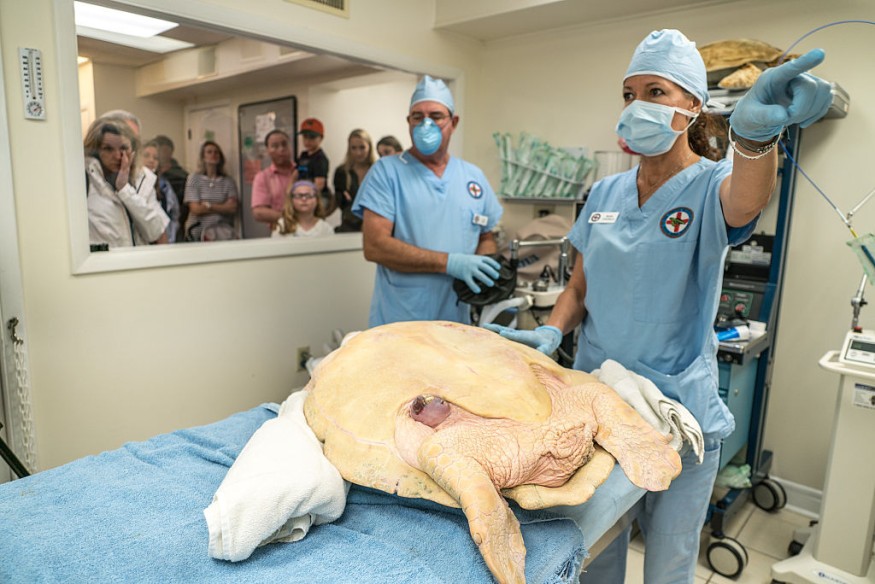
After a decade of absence, the critically endangered sea turtle in Texas has finally nested in the dunes on the beachside of Galveston Island State Park.
The Sea Aggie Sea Turtle Patrol has been doing routine survey and recording nests found at the park. At mid-May, a nest containing 107 endangered sea turtle eggs belonging to a Kemp's Ridley Sea Turtle turned up in the Texas beach, the first nest found at the park since 2012, Good News Network reports.
The species (Lepidochelys kempii), also called the Atlantic ridley sea turtle, was listed as Critically Endangered and known as the world's most at-risk sea turtle. The nest was only one of three nests that contained eggs at the park since the Turtle Patrol began keeping records.
The Turtle Patrol and the Gulf Center for Sea Turtle Research transported the nest to the incubation facility at Padre Island National Seashore, where they'll have a better chance at survival, according to the Texas Parks & Wildlife.
"This species has been with us for 140 [million], 160 million years, and we're the ones responsible for almost sending it to extinction in the 1980s," Christopher Marshall, a professor of marine biology at Texas A&M and director for the Gulf Center for Sea Turtle Research, said in the statement.
Every Egg Matters
The Kemp's Ridley Sea Turtle one of just two members of the genus Lepidochelys from Mexico, and have been found in the U.S only in Texas state. Aside from being the globe's most endangered species of sea turtle, they are also the world's tiniest.
According to an aerial survey in 1947, the species used to come ashore on the beaches of Rancho Nuevo, Mexico by tens of thousands, but followed a 'catastrophic population lost' due to storms, high tide and predation, Dr. Marshall said, "which is why it is important to transport these nests to an environment where they have the best chance for survival into adulthood," he added.
If left on the beach, the eggs would have 45% rate of survival, while survival rate may reach up to 95% if incubated.
"The Kemp's Ridley Sea Turtle is one of the most endangered sea turtle species in the world so every egg matters," Dr. Marshall notes.
Ongoing Conservation Efforts
The Smithsonian reports around 5,500 individual nests on the beaches of Mexico, and 55 nest in Texas as of 2020. Mexico and the US are putting in conservation efforts so we won't have to wait another ten years to find the next nest.
"The Gulf Center for Sea Turtle Research appreciates the partnership with the Texas Parks and Wildlife Department, especially Galveston Island State Park," said Marshall. "The park hosts our volunteers and serves as a home base for the Turtle Patrol on the Upper Coast. The partnership has been invaluable."
The typical nesting season for the Kemp's Ridley Sea Turtle runs between April 1 and July 15, and the park suggests that sightings of nests should be brought to their attention, but stay at least 60 feet away from the turtle or nest.
Related article : Elephant Tramples Woman to Death, Comes Back After Few Hours to Crush Body at Her Funeral
© 2025 NatureWorldNews.com All rights reserved. Do not reproduce without permission.





